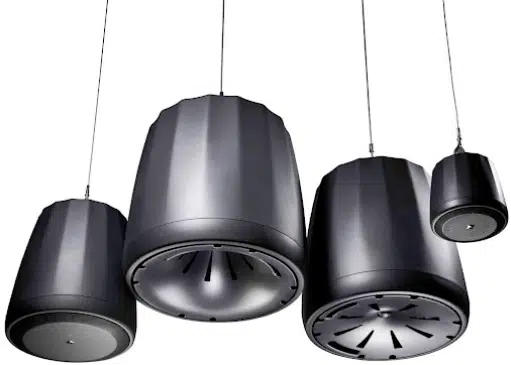The Science Behind Tyre Treads: What They Do and Why They Matter
Tyres are one of the most critical components of a vehicle, and their design plays a significant role in ensuring safety and performance. Among the many features of a tyre, the tread is one of the most essential. Tyre treads are not merely for aesthetics—they are a product of advanced engineering designed to maximize grip, improve handling, and ensure safety in various driving conditions. In this article, we’ll delve into the science behind tyre treads, what they do, and why they matter.
What Are Tyre Treads?
Tyre treads are the grooves and patterns on the surface of a tyre that come in contact with the road. These patterns, often made up of blocks, channels, and sipes, serve specific purposes that contribute to a tyre’s overall performance. The depth, design, and layout of treads vary depending on the type of tyre and its intended use, whether for wet weather, off-road conditions, or high-speed driving.
The main function of tyre treads is to maintain traction by creating friction between the tyre and the road surface. The patterns and grooves are engineered to optimize contact while managing challenges such as water, mud, snow, and uneven terrain.
The Functions of Tyre Treads
Tyre treads serve several key purposes that impact safety, efficiency, and vehicle performance.
Providing Traction
Traction is the tyre’s ability to grip the road surface. Treads are designed to maximize this grip by increasing the surface area in contact with the ground. For example, deeper treads are better suited for off-road driving, as they can dig into soft surfaces like mud and sand.
Channeling Water Away
One of the most critical functions of tyre treads is to channel water away from the contact patch during wet conditions. This prevents hydroplaning—a dangerous situation where a layer of water builds up between the tyre and the road, causing the vehicle to lose control. The grooves in the tread act as channels, directing water away to maintain contact with the road surface.
Enhancing Stability
The tread pattern also contributes to vehicle stability by improving grip during acceleration, braking, and cornering. Specific patterns, such as asymmetrical or directional treads, are designed to provide superior handling and control.
Reducing Noise
Modern tyre treads are engineered not only for performance but also for comfort. Patterns are designed to minimize road noise, ensuring a quieter and more enjoyable ride. This is particularly important for highway and city driving.
Adapting to Different Conditions
Different tread designs are optimized for specific conditions. Winter tyres, for example, have deep grooves and sipes that enhance grip on icy or snowy roads, while summer tyres are designed with shallow grooves for better performance in dry conditions.
The Anatomy of Tyre Treads
To understand how treads work, it’s essential to break down their components:
Grooves
Grooves are the deep channels in the tyre tread that help evacuate water, mud, or snow from beneath the tyre. These grooves play a critical role in preventing hydroplaning.
Tread Blocks
Tread blocks are the raised sections of the tyre that come into direct contact with the road. They are responsible for generating the friction needed for traction.
Sipes
Sipes are the small slits or cuts in the tread blocks. They enhance grip, particularly in wet or icy conditions, by providing additional biting edges.
Shoulders
The shoulders of the tyre are located at the edge of the tread. These areas contribute to cornering stability and help maintain traction when the vehicle is turning.
Types of Tread Patterns
Tyre treads come in various patterns, each designed for specific driving needs and conditions.
Symmetrical Tread Pattern
This pattern features identical designs on both halves of the tyre. It is long-lasting, fuel-efficient, and suitable for general-purpose driving, making it ideal for everyday vehicles and consistent road conditions.
Asymmetrical Tread Pattern
This pattern includes different designs on the inner and outer parts of the tyre. It improves handling, enhances cornering, and provides better performance in wet conditions. It is well-suited for high-performance vehicles and mixed driving conditions.
Directional Tread Pattern
This pattern has V-shaped designs that point in a single direction. It excels at water evacuation and offers enhanced performance at high speeds. It is commonly used in wet weather and winter tyres.
Off-Road Tread Pattern
This pattern features deep, aggressive grooves and large tread blocks, providing superior grip on uneven terrain such as mud, sand, or rocks. It is specifically designed for off-road vehicles and rugged conditions.
How Tread Depth Impacts Performance
Tread depth plays a crucial role in a tyre’s performance. As tyres wear down, their ability to maintain traction and channel water decreases significantly.
Legal Tread Depth Requirements
Many regions have legal minimum tread depth requirements to ensure safety. In most cases, the minimum depth is 1.6 millimeters (2/32 of an inch). Tyres below this threshold should be replaced immediately.
Effects of Worn-Out Treads
Worn-out treads reduce grip, increase the risk of hydroplaning, and require longer braking distances. These issues pose significant safety risks, especially in wet or icy conditions.
Why Regular Tread Checks Are Essential
Regularly inspecting your tyre treads ensures optimal performance and safety. Here’s how you can monitor tread health:
The Penny Test
Insert a coin into the tread grooves with the head facing downward. If the top of the head is visible, it’s time to replace the tyre.
Look for Uneven Wear
Uneven tread wear can indicate alignment or suspension issues. If one side of the tyre wears out faster than the other, consult a professional.
Inspect for Damage
Cracks, cuts, or bulges in the tread compromise tyre integrity. Damaged tyres should be replaced immediately to avoid potential blowouts.
How Tread Design Has Evolved Over Time
The science behind tyre treads has advanced significantly, with modern designs incorporating features like noise-reducing patterns, enhanced water evacuation systems, and adaptive designs for varying road conditions. These innovations improve both safety and performance.
Tips for Maintaining Tyre Treads
To maximize the lifespan and performance of your tyre treads:
- Rotate tyres regularly to ensure even wear.
- Maintain proper tyre pressure, as under-inflation or over-inflation can cause uneven tread wear.
- Avoid harsh driving, such as aggressive braking or cornering, which accelerates wear.
- Schedule regular tyre inspections to catch issues early.
Tyre treads are a vital component of vehicle safety and performance. From providing traction to channeling water and improving handling, their design and condition directly impact your driving experience. By understanding the science behind tyre treads and maintaining them regularly, you can ensure a safer, smoother, and more efficient ride. Make tread maintenance a priority—it’s an investment in your safety and your vehicle’s longevity. Tire Pte Ltd offers expert solutions to help you keep your tyres in top condition.






